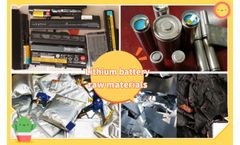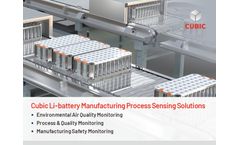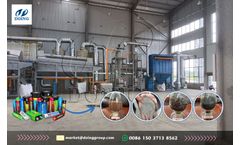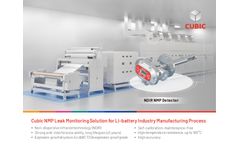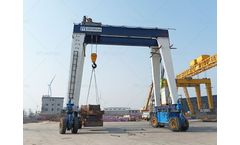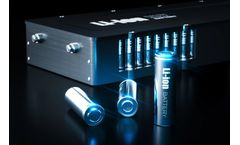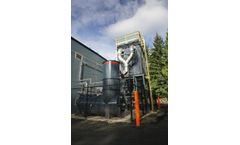Lithium Ion Li Ion Battery Articles & Analysis
89 articles found
Secure and resilient energy is critical to the mission of United States Marine Corps Recruit Depot (MCRD) Parris Island, which is summed up by the Depot's mission statement, "We make Marines." To increase the depot's energy resilience, MCRD installed a microgrid that combines several distributed generation sources in a hybrid approach. The microgrid has a 3.5 MW combined heat and power (CHP) ...
With the rapid development of the global new energy industry, the demand for lithium-ion batteries continues to rise, which also brings about the problem of handling a large number of waste batteries. ...
In an era defined by climate urgency and mounting energy demands, lithium‑ion batteries have emerged as a linchpin technology—bridging the gap between intermittent renewables and reliable power access. From remote villages to sprawling urban centers, these versatile storage systems underpin electric vehicles, stabilize electrical grids, and facilitate off‑grid microgrids. As the world races ...
Lithium-ion forklift batteries, by contrast, offer transformative advantages: rapid charging, predictive maintenance capabilities, seamless integration with smart fleet management, and substantial reductions in carbon footprint. ...
The manufacturing of lithium-ion batteries requires a highly controlled environment, stringent safety protocols, and robust quality assurance mechanisms throughout every stage of production. ...
With the explosive growth of India's electric vehicles and energy storage industries, the amount of scrapped lithium batteries is expected to exceed 500,000 tons in 2030, but traditional hydrometallurgical recycling technology is difficult to meet market demand due to high cost, high pollution and complex processes. In response to the pain points of the Indian market, DOING Group launched lithium ...
In the production and application of lithium batteries, thermal runaway is a critical safety concern. Thermal runaway is a phenomenon in which the internal temperature of a lithium battery rises sharply due to overcharging, over-discharging, short circuits, or external high temperatures, triggering a chain reaction, leading to ...
In lithium battery production, NMP (N-Methyl pyrrolidone), a critical solvent, is widely applied to dissolve binders including PVDF (Polyvinylidene Fluoride) for preparing cathode slurry. ...
How to choose battery separator? The selection of battery separators can be based on their intended use. For example: 1. Glass fiber separator: widely used in lithium-ion batteries, lithium air batteries, high rate lithium-ion batteries, and aqueous zinc ion batteries, it is favored due to its high porosity, good liquid absorption, and high temperature stability. 2. Polyolefin ...
Doped carbon nanotubes (CNTs) exhibit special and enhanced properties that are desirable in many applications. But to have a proper grasp of how they perform, to ensure that they're performing to the specification, they must be characterized with care. Here are some of the most important methods for characterising doped carbon nanotubes: Transmission Electron Microscopy (TEM) and High-Resolution ...
The global focus on sustainability and reducing carbon emissions has spurred a paradigm shift in industries worldwide. Among the most notable changes is the move toward electrification in container handling equipment, particularly Rubber Tyred Gantry (RTG) cranes. As ports and terminals seek greener, more efficient operations, electrified RTG cranes are emerging as a cornerstone of this ...
The most important components in a secondary battery are electrode materials, separators, and electrolytes. The main function of the electrolyte is to conduct ions to ensure that the ions move between the anode and cathode at a certain rate during the charging and discharging process of the battery to form the entire electrical circuit to generate current. As an important medium for ion ...
Lithium-ion batteries are currently widely used in the field of energy storage. The high risk of fires and explosions of lithium-ion batteries at energy storage stations has raised significant concerns about the safety of electrochemical energy storage facilities. Lithium-ion batteries serve as the energy carriers for the energy storage stations, with their electrode system components possessing ...
Thermal runaway is a violent chain reaction of exothermic chemical reactions resulting in an uncontrollable increase in system temperature. Now, where does this reaction might unfold? Batteries and energy storage systems, which are integral parts of tech around us, are the main stage for this drama. They sometimes fall victim to thermal runaway, turning a peaceful power source into a potential ...
The world of battery development is being transformed by the intricate chemistry of electrodes. They play a key role in enhancing energy densities and overall battery performance. This can be seen in lithium-ion batteries and their application in electric vehicles. Recent advancements in electrode material science, spanning from the implementation of graphite anodes to the exploration of solid ...
The Climate Institute seeks partnerships with startup initiatives and emerging technology development efforts that transform renewable energy systems. We welcome initiatives and demonstration projects to help advance meaningful climate solutions. The Climate Institute supports our colleagues and partners working on emerging technologies by providing research assistance, intern support, ...
This property provides a platform for the reversible storage and release of various substances, such as lithium ions. One of the key advantages of expandable graphite is its high thermal conductivity. ...
The Challenge In the ever-evolving landscape of energy storage technology, the demand for efficient and sustainable solutions has intensified, prompting a significant shift in the materials utilized for lithium-ion batteries. Anode active materials (AAM) are generally made from carbon-based materials like graphite, silicon, or a combination of the two, with graphite having been the most used ...
Introduction In today’s modern world, batteries play a pivotal role in powering an array of devices and systems, from our cars to emergency backup systems and even renewable energy storage. Among the various types of batteries available, the lead-acid battery is one of the oldest and most widely used technologies. This article will delve into the fascinating world of lead-acid batteries, ...
Lithium-Ion Batteries Explained Li-ion batteries have changed the way people store energy. ...


